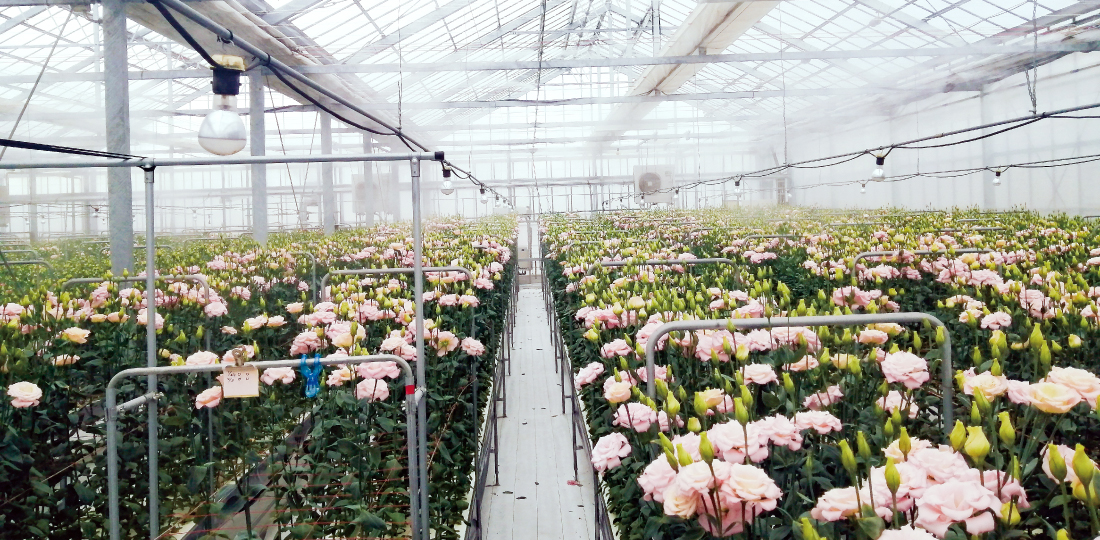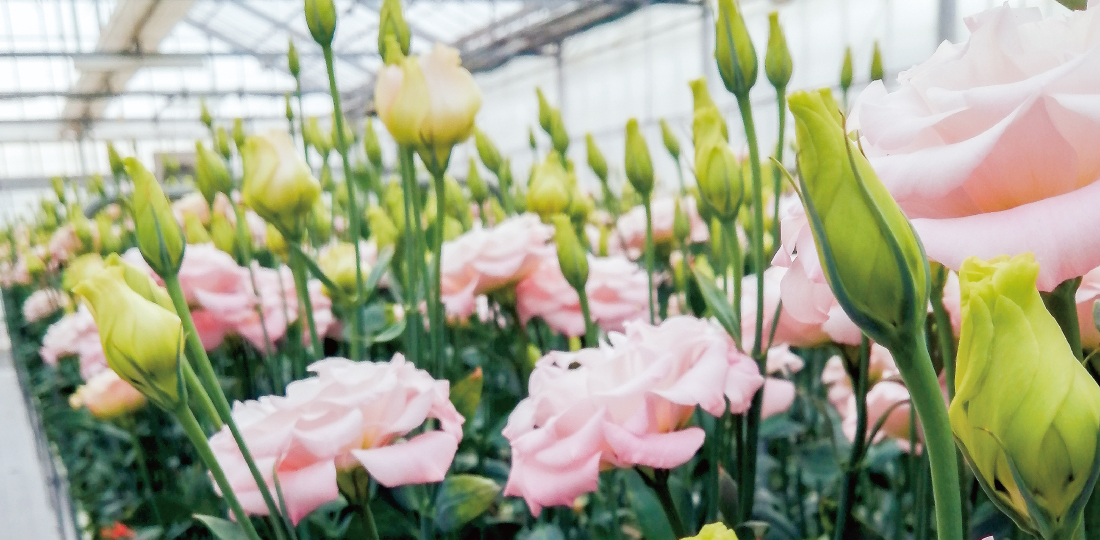
Achieving Uniform Seedling Growth with Fogging Sprayer from IKEUCHI

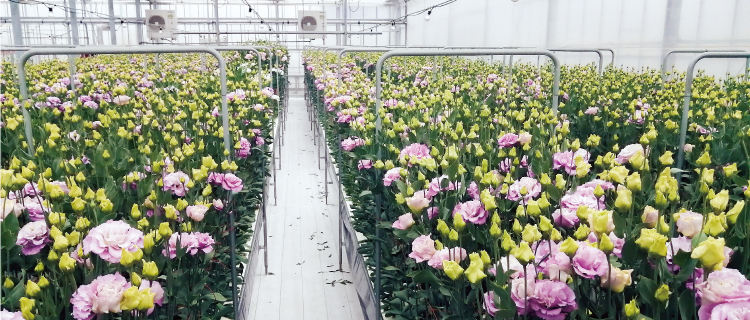
Iwaki Hanasho, engaged in the Advanced Technology Deployment Project under the Ministry of Agriculture, Forestry and Fisheries and the Reconstruction Agency, is a greenhouse flower grower cultivating Eustoma in their horticulture greenhouses in Iwaki City, Fukushima Prefecture, Japan. They have established a year-round cultivation system that enables harvesting Eustoma three times a year through hydroponics and integrated environmental control, allowing for the stable supply of profitable, high-quality flowers throughout the year.
"Meticulous humidity and daily mean temperature control has greatly enhanced the precise quality of the flowers throughout the year, while the system’s capability of boldly controlling the temperature and humidity on an hourly basis is highly dependable." (Hiroki Igari, President)
Solutions or Products Featured
in This Case Study
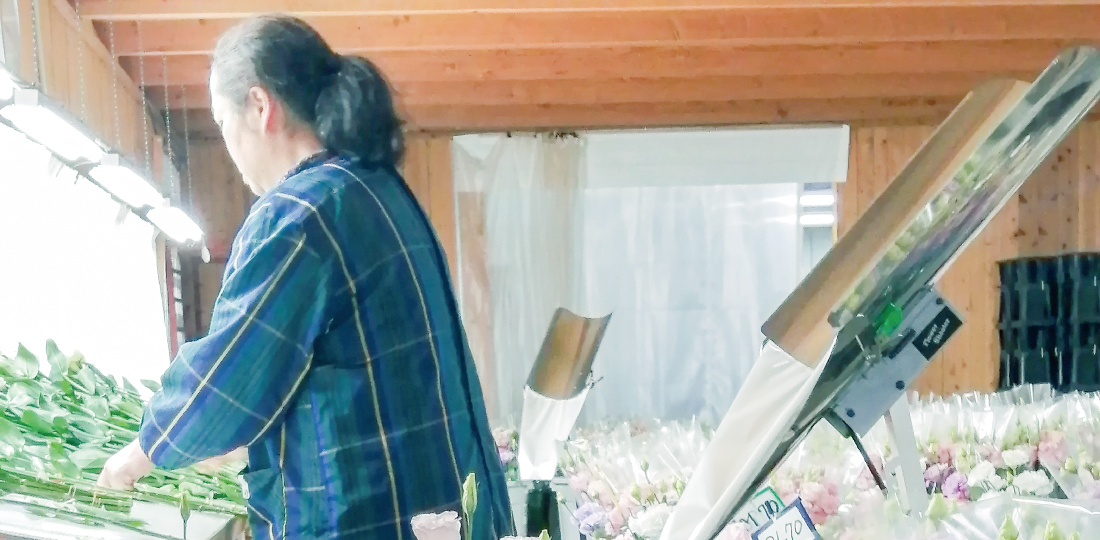
In 2014, in order to promote the flower industry in Fukushima Prefecture after the earthquake, we participated in the Advanced Technology Deployment Project implemented by the Ministry of Agriculture, Forestry and Fisheries and the Reconstruction Agency.
To achieve year-round shipment of high-quality Eustoma from Fukushima, we are working on utilizing advanced farming technologies such as hydroponics and seedling systems that have never been applied to the cultivation of Eustoma. Currently, we are harvesting Eustoma three times a year in each of our three greenhouses, enabling us to ship large-flowered Eustoma throughout the year.
We have been working to create the optimal environment in our greenhouses also by using the integrated environmental control system. When the greenhouses were constructed, we initially installed a pad and fan system in one of the three greenhouses and the CoolPescon CH (CPCH) system in another, and have been establishing appropriate temperature and humidity conditions while observing the characteristics of each system.
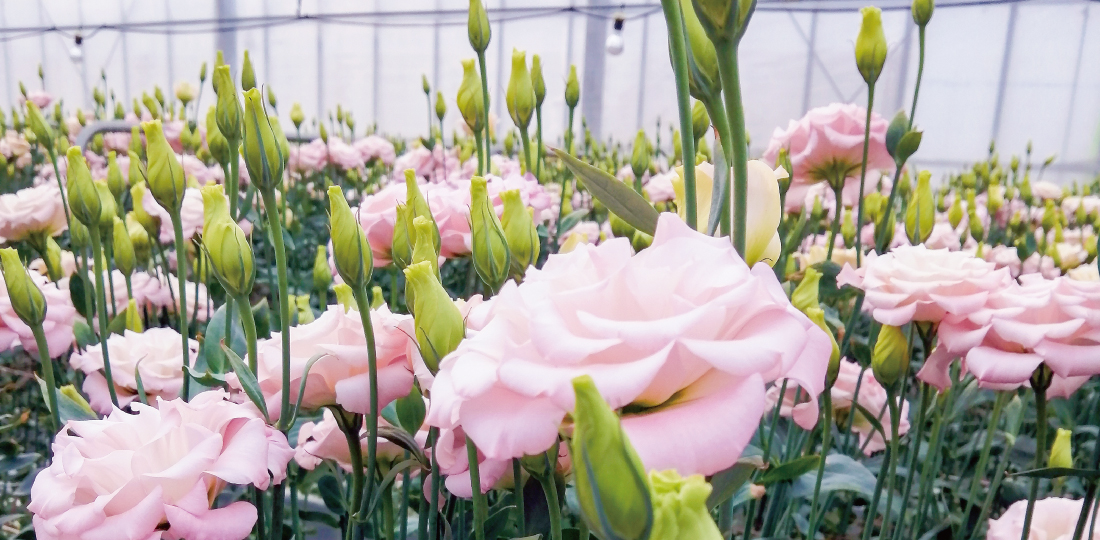
While the pad and fan system had its advantages, the fan’s high power consumption and the excessive humidity increase when running the fan to dry the wet pad often made it difficult to decide whether to operate the system.
In this regard, the CPCH system is very user-friendly because of its ability to stably synchronize humidity with operating time and its lower electricity consumption, allowing for meticulously creating the desired temperature and humidity conditions with precise on-off control. In hydroponic cultivation of Eustoma, humidity control is particularly important during the approximately two weeks immediately after planting. On sunny winter days, the relative humidity can quickly drop below 20%, resulting in a harsh environment for the young seedlings after planting.
However, the pad and fan system also lowers the temperature, making it inoperable during winter. We tried to maintain humidity levels by using a power sprayer to spray water, but it was completely insufficient. Since the success of the crop largely depends on cultivation of the seedlings, I believe that humidity control for young seedlings immediately after planting is one of the most critical aspects of environmental control to achieve high-quality flowers and stable shipments.
One of the advantages of the CPCH system is its ability to create the desired humidity environment whenever needed, regardless of the season.
The more petals the large-flowered Eustoma have, the higher the price they fetch in the market. The number of petals of Eustoma is largely influenced by the greenhouse interior temperature during the growth of flower buds. As shown in the graph below, the daily mean temperature during the first month after the flower buds begin to grow is crucial; the higher the daily mean temperature, the fewer petals the flower will have. Therefore, to cultivate large-flowered Eustoma, daily control of the mean temperature to keep it below 23 degrees Celsius is necessary.

Partially modified and reprinted from: NARO (2018) “Temperature Control Technology to Increase the Number of Petals of Double-flowered Eustoma,” 2018 Achievement Report, Division of Vegetables and Floriculture Research
As daytime temperatures approach 30 degrees Celsius from around June, it becomes necessary to set and control daily target temperatures while monitoring night temperatures. Temperature control becomes even more challenging during the peak summer period. Basically, the control involves ensuring adequate light in the morning and prioritizing shading in the afternoon to suppress temperatures from rising. Therefore, suppressing the temperature rise in the morning enables the shading curtains to be opened for a longer time, ensuring sufficient photosynthesis.
When the outside temperature is close to 35 degrees Celsius, ventilation alone lets the indoor temperature exceed 40 degrees Celsius, while operating the CPCH system enables maintaining the indoor temperature at just 1 or 2 degrees above the outside temperature.

The typhoon that hit us in 2019 forced us to update and replace our facilities. At that time, we boldly decided to install the CPCH systems in the remaining two of our three greenhouses as well. Now, the CPCH delivers superior performance in creating the optimal environment in all three greenhouses. We continue to challenge ourselves to establish a new and unprecedented cultivation system. The CPCH supports us in proactively creating the necessary environment for this endeavor.
